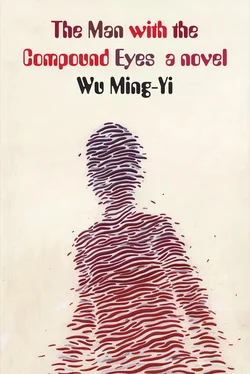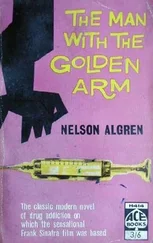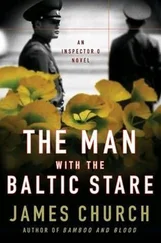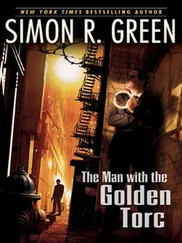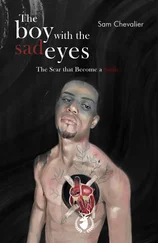Mr. Moore, the heir to a family fortune from the oil industry, subsequently sold his business interests and became an environmental activist. He launched the Algalita Marine Research Institute. To him, containing the Trash Vortex had the same symbolic significance as humanity’s efforts to combat global warming. And he was willing to lead the fight. Marcus Eriksen, the former research director at Algalita, says that historically the trash entering the North Pacific Gyre has biodegraded. But modern plastics and composites are so durable that intact items thrown away half a century ago can still be found in the Trash Vortex today. A number of charitable foundations have reserved funding for scientists analyzing its composition or searching for a solvent that would “obliterate” the garbage, but the search has proven elusive, because any solvent that can dissolve plastic would release toxic chemicals into the water, potentially hastening ocean death in and around the vortex.
Based on scientific analysis, about a fifth of the trash is from ships and oil rigs, while the rest has been dumped into the ocean by Pacific Rim nations. Because the confetti of plastic rubbish is translucent and lies just below the water’s surface, it is not detectable in satellite photographs. It can only be seen passing along the hull of a ship. The tiny plastic pellets of which the vortex is composed act like chemical sponges, absorbing hazardous chemicals like hydrocarbons and DDT, which then enter the food chain. People have also discovered lighters, toothbrushes and plastic syringes in the stomachs of the dead seabirds and sea turtles that mistook these things for food. Dr. Eriksen said that what goes into the ocean goes into these animals and onto your dinner plate. It’s that simple.
The Algalita Marine Research Institute went bankrupt after over a decade of operation, but the Trash Vortex is still floating around in the ocean. It has now fragmented into several parts, one of which is headed west across the north Pacific. Taiwan lies right in its path. Several years ago, the Ministry of Environmental Resources and the US government discussed the possibility of skimming or turning the vortex in the event of an emergency, but the job was simply too big, and even if it had been possible to sweep it up, nobody knew where the waste should be buried. At the present juncture, the Kuroshio current is pushing part of the vortex toward Taiwan. The Ministry has put out an evacuation advisory notice for east-coast residents, because nobody knows what harmful substances the nonbiodegradable waste in the vortex might contain.
This is unbelievable, Dahu thought. He told Umav, “There’s a trash island floating this way.”
“What trash island?”
“It’s made of stuff like this,” said Dahu, yanking at the plastic tablecloth. “We keep throwing this kind of thing in the ocean. Gradually a heap of garbage formed, and when it got big enough it turned into an island.”
“Are my slippers on the island?”
“Possibly.”
“What about your binoculars?”
“Probably.”
“What about Mummy’s headband?”
Dahu didn’t reply. Umav found a headband somewhere when she was very small. He knew it was Millet’s as soon as he saw it. It was a little thing he had forgotten to throw out, maybe on purpose. Umav asked him whether it was Mummy’s, and he shook his head. Umav said it was, and he said it wasn’t. “Yes it is ,” she said, and put it away before he had a chance to reply. But it had floated off somewhere in the flood. Dahu thought Umav had forgotten all about it.
At the mention of his binoculars Dahu recalled again what had happened that day.
After taking Alice for a hike along the rescue route, Dahu had a sudden intuition about another route he could try. He went up alone, only to suffer a string of bad luck. What bugged him the most was the loss of his trusty binoculars, which had been with him through thick and thin for over a decade, until they fell into the creek in a moment of carelessness while he was arranging things in his backpack. They were brand-name binoculars he’d bought back in his student days, eating nothing but instant noodles for months in order to save up the money. Because they’d fallen right against the base of the cliff, it appeared he would never retrieve them. In a huff, Dahu decided to call it a day. He took out a betel leaf he had picked at the foot of the mountain and folded up the two ends. Then he used his Swiss army knife, first to poke a hole in each end of the leaf, then to sharpen the end of a strip of bamboo, which he passed through the holes in the leaf to make an improvised platter. He had picked arrow bamboo shoots on the way up. Now he prepared them one by one: you pinched the tip and swiveled the base around to remove a vertical strip down the sheath, then the whole sheath would just come off. He wanted to make a soup.
Just as he was about to build the fire, he seemed to see a human form walking toward the edge of the gorge.
Usually in a situation like this Moon and Stone would give chase, but that evening the two dogs didn’t move a muscle, like they hadn’t noticed anything. Dahu shouted and it was like they’d suddenly realized what was going on. Dahu went after him, but he did not run, afraid that if the fellow was a mountain climber, Dahu might frighten him and cause an accident. Instead, he tried talking to him: “Hey there, what’s up? I’m just up here hunting. Care to join me for a drink? I’ve got some fine tea with me, and there’s wine as well.”
He and his dogs tried to approach the man, but the man kept his distance. Apparently he was of medium build, but he also seemed to be a muscular young man. Dahu was ready to give up, thinking it was just some guy, probably someone in the habit of coming up alone just like him. Why not leave him alone? But when Dahu stopped, he was certain he sensed the man waving at him. Before Dahu had a chance to react, Moon and Stone went after him. Dahu had to follow along.
The chase proceeded in a tacit, single-file arrangement: the man, Stone, Moon, with Dahu pulling up the rear. It carried on for about half an hour before the man ducked under a bush. Dahu, about a dozen meters behind, could barely make out the man’s movements in the faint moonlight. Dahu reached the bush, hesitated for a second, then crouched down and went in. Up ahead, Moon and Stone were barking like crazy, like they’d suddenly seen something. It started raining harder and harder, with the raindrops pattering down on the tree canopy above. Dahu hastily put on his water-resistant jacket.
The space under the bush was too low even for a Bunun. Dahu was crouching so much he had to prop himself up with his hands. He was almost crawling part of the way. Finally he was able to stand up straight, right when a dark cloud hid the moon from view. Dahu groped around in the darkness and found that he had arrived beneath a huge rocky outcrop. Moon and Stone had run off somewhere, so Dahu felt along with his hand to see whether the path ahead was level or not. It turned out not to be: there was a pit right in front of him, as wide as a man’s outstretched arms. To one side was the huge root of a cypress tree, and the tree shade made it even harder to see the pit, which looked deep, even bottomless, in the darkness. Momentarily unable to keep his breathing regular, he got some rain up his nose and coughed so hard his chest hurt. Had that man lured him here to show him this pit?
Dahu called for Moon and Stone and soon they appeared. Dahu decided to go back to camp to get spikes, a rappeling rope and a headlamp: he had to see what was down there.
“Dad, look!” Umav said, pulling Dahu back to reality. She was pointing at the TV. Dahu looked up and hey, wasn’t that at the Seventh Sisid? Dahu could tell immediately: that was the view looking out from the Lighthouse.
Читать дальше
